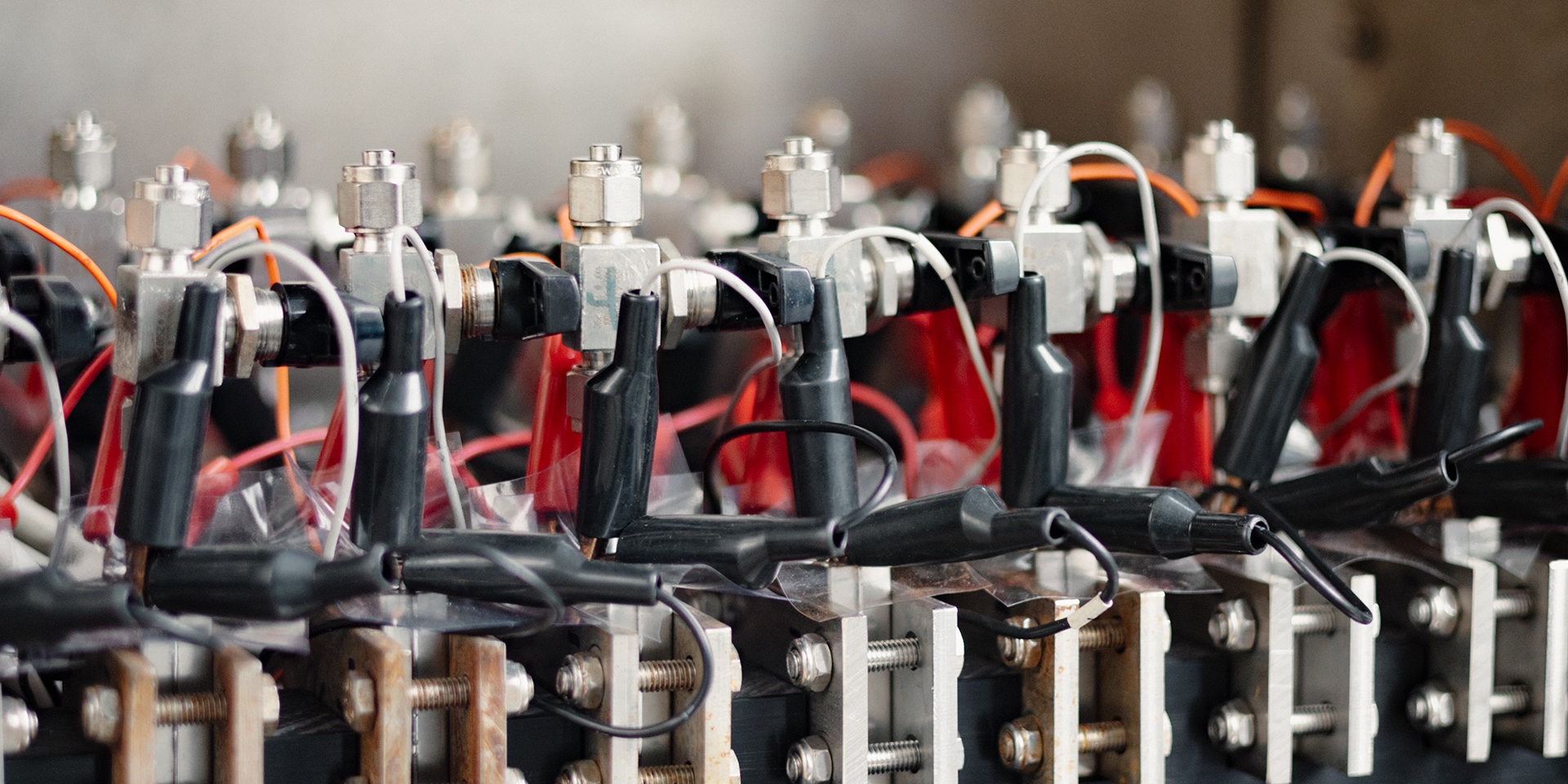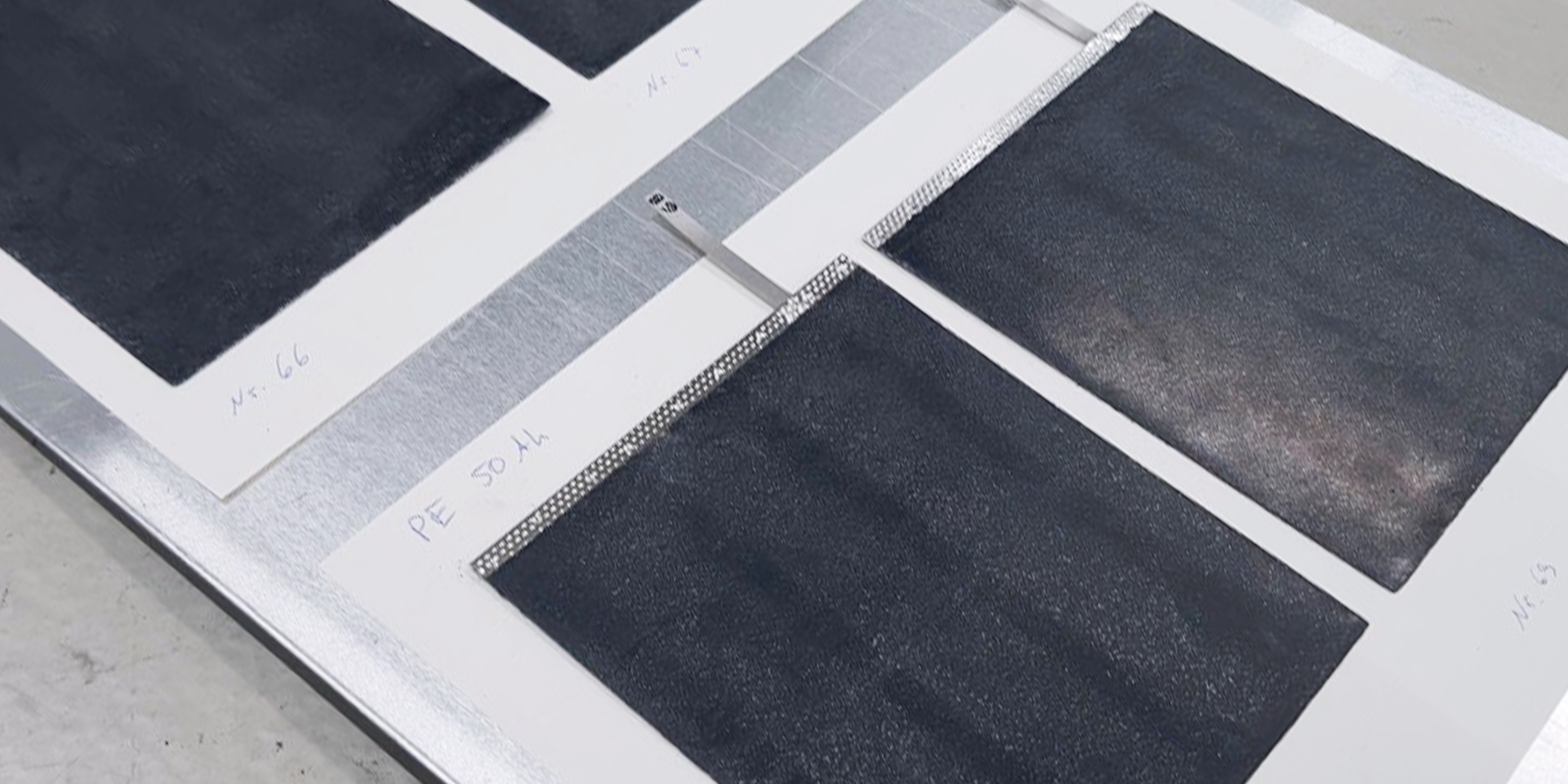Sustainability

Our contribution to the energy transition
The green key
We are developing solid-state batteries that truly deserve the label ‘sustainable’: extremely durable, with a unique combination of features and are capable of fast-charging. Non-flammable, without critical raw materials such as cobalt, and with an up to 50 % better environmental balance than conventional lithium-ion batteries. All this at competitive manufacturing costs.
Batteries that last
The world needs less (but better) batteries
Battery ageing is the linchpin of battery sustainability. After a few thousand charging cycles at the latest, a conventional battery has to be replaced by a new one, the production of which in turn consumes energy and resources.
Battery ageing is not only the root cause of short life, but also of the oversizing of conventional batteries, which are thus – at least partially – made fast-charging capable.
Our “penicillin moment”
Our actual research goal was to solve the ageing of batteries at the chemical root. With the solution, we then “accidentally” stumbled across the discovery of the HPB Solid-State Electrolyte.
The embedding of the HPB Solid-State Electrolyte in a fully cell system ultimately led to the invention of the HPB Solid-State Battery.
Loooooooong lasting
This globally unique battery has extreme longevity and other outstanding properties due to its inorganic chemistry. To date, over 12,500 full charge cycles have been completed with hourly charging and discharging, from 0 to 100 % state of charge. The HPB Solid-State Battery is therefore approx. 10 times longer lasting than conventional batteries under comparable conditions. The embedding of the HPB Solid-State Electrolyte in a fully-fledged cell system ultimately led to the invention of the HPB Solid-State Battery.

Image: Cycle measurements of HPB test cells with hourly charging and discharging
from 0-100 % state of charge, carried out at room temperature
Powering tomorrow
The risk of replacing one sustainability problem with another
The transition from fossil fuels to renewable energy sources, from a centralized to a decentralized energy supply, from combustion engines to electric motors is one of the greatest challenges of our time.
Battery storage is seen as a key element for the success of the energy transition. At the same time, it must be borne in mind that batteries also consume energy and raw materials – to a very considerable extent with today's technology.
The foreseeable demand for lithium-ion batteries is gigantic and carries the risk of replacing one sustainability problem with another. Because every new battery also means lithium mining, CO2 emissions and, at some point, hazardous waste.
So the question is which technology we want to scale up.
The key is longevity combined with better properties
We at HPB are proud to be able to offer a solution with our HPB Battery Technology that is safer, longer lasting and greener than conventional lithium-ion batteries.
Quantifying Impact
Life cycle assessment: A must for battery storage systems
The life cycle assessment method is an important basis for comprehensive and transparent sustainability assessments. It analyzes all material and energy flows associated with the manufacture, use and disposal of a product - across its entire life cycle. This also makes raw material requirements and environmental impacts that are easily overlooked at first glance transparent and quantifiable.
Up to 50 % better environmental balance
Independent life cycle assessments show that the HPB solid-state battery produces up to 50 % less greenhouse gas emissions than conventional lithium-ion batteries.
Committed to responsibility
As a company, we also use our influence on environmentally friendly production by obliging our licensees to carry out a life cycle assessment at cell level.
More sustainable is also more economical
Battery ageing also has an important economic consequence
A favorable storage price in euros per kWh of capacity can be misleading: The decisive factor is the price of the battery storage system as a whole, which is required for a specific use.
If you compare a conventional battery with a technologically advanced, genuinely fast-charging storage system, the former must be significantly larger than the latter for the same ease of use.
Already competitive at the time of purchase
A conventional battery may appear cheaper in terms of kWh - but in terms of the actual storage size required, the HPB Solid-State Battery is already competitive in terms of acquisition costs due to the lower quantity of kWh required. Added to this is the economic advantage that the longevity of the battery storage system brings in itself.
Simple recovery thought ahead

Sustainability engineered into every layer
We are constantly developing our HPB Solid-State Battery so that it lasts as long as possible. When it comes to recycling, it scores highly thanks to the easy separability of the value-bearing components stainless steel (housing) and nickel (arrester) as well as the active masses.
External evaluation of the sustainability of recycling
HPB cooperates with cylib, a start-up company for holistic and innovative battery recycling.
End of life doesn’t mean end of responsibility
To create a sustainable circular economy, cylib's proprietary deep-tech and end-to-end recycling technology offers efficient resource- and climate-friendly recovery of all battery raw materials, including lithium, graphite and nickel from battery packs or production waste. As a result, recycled materials should have a smaller ecological footprint than new raw materials. The cylib process enhances this advantage through a patent-pending CO2-efficient technology.
With the cylib process, HPB aims to improve the easy recyclability of the HPB Solid-State Battery through innovative and climate-friendly recycling processes through to the pyro- and hydrometallurgical extraction of raw materials. This enables an even more sustainable conversion of waste from old batteries or production scrap into marketable products. As the entire process is in one hand, it is also possible to process production waste and black mass.
FAQs
- Why is the HPB Solid-State Battery the green key to the energy transition?
Batteries are indispensable for the energy transition. However, their production requires large quantities of raw materials and energy, and their very limited cycle life will foreseeably lead to an enormous recycling and disposal problem. The HPB Solid-State Battery does not contain any critical raw materials such as cobalt and, thanks to its extremely long cycle life, can significantly reduce not only resource consumption but also future recycling and disposal requirements. When it comes to recycling, it can score points thanks to the easy separability of the value-bearing components stainless steel (housing) and nickel (current collector) as well as the active masses. As a company, we also use our influence on environmentally friendly production by obliging our licencees to carry out a life cycle assessment at cell level.
